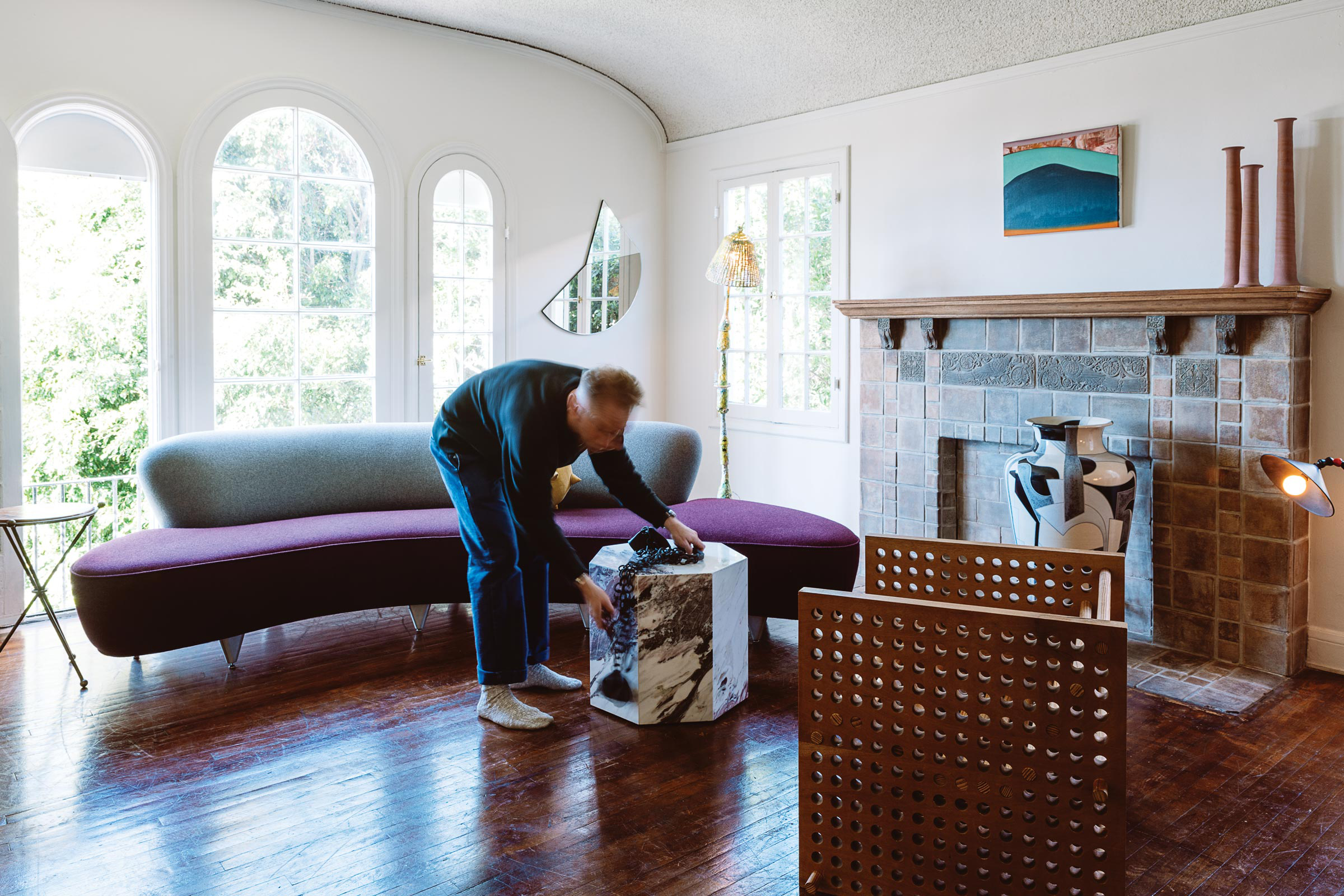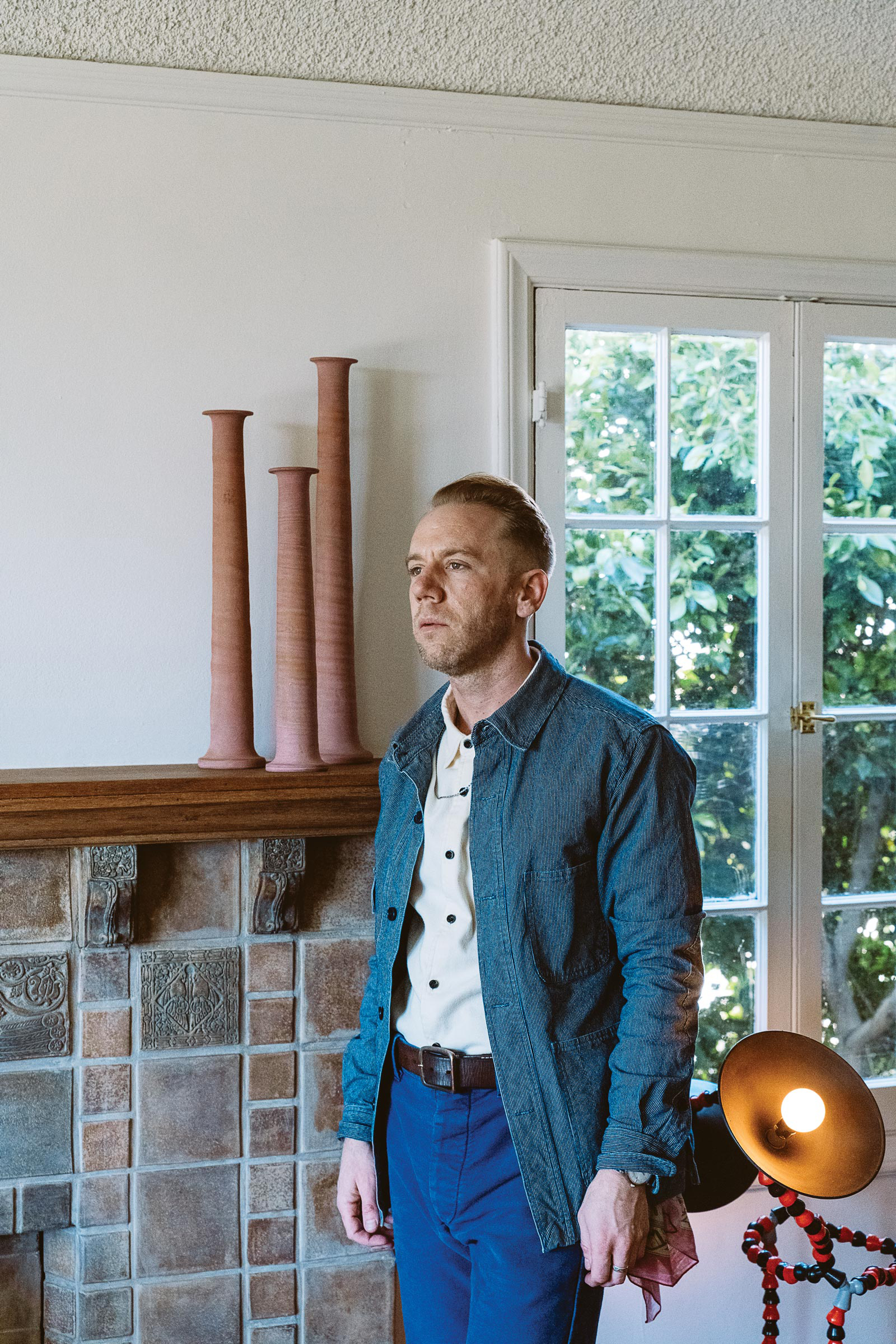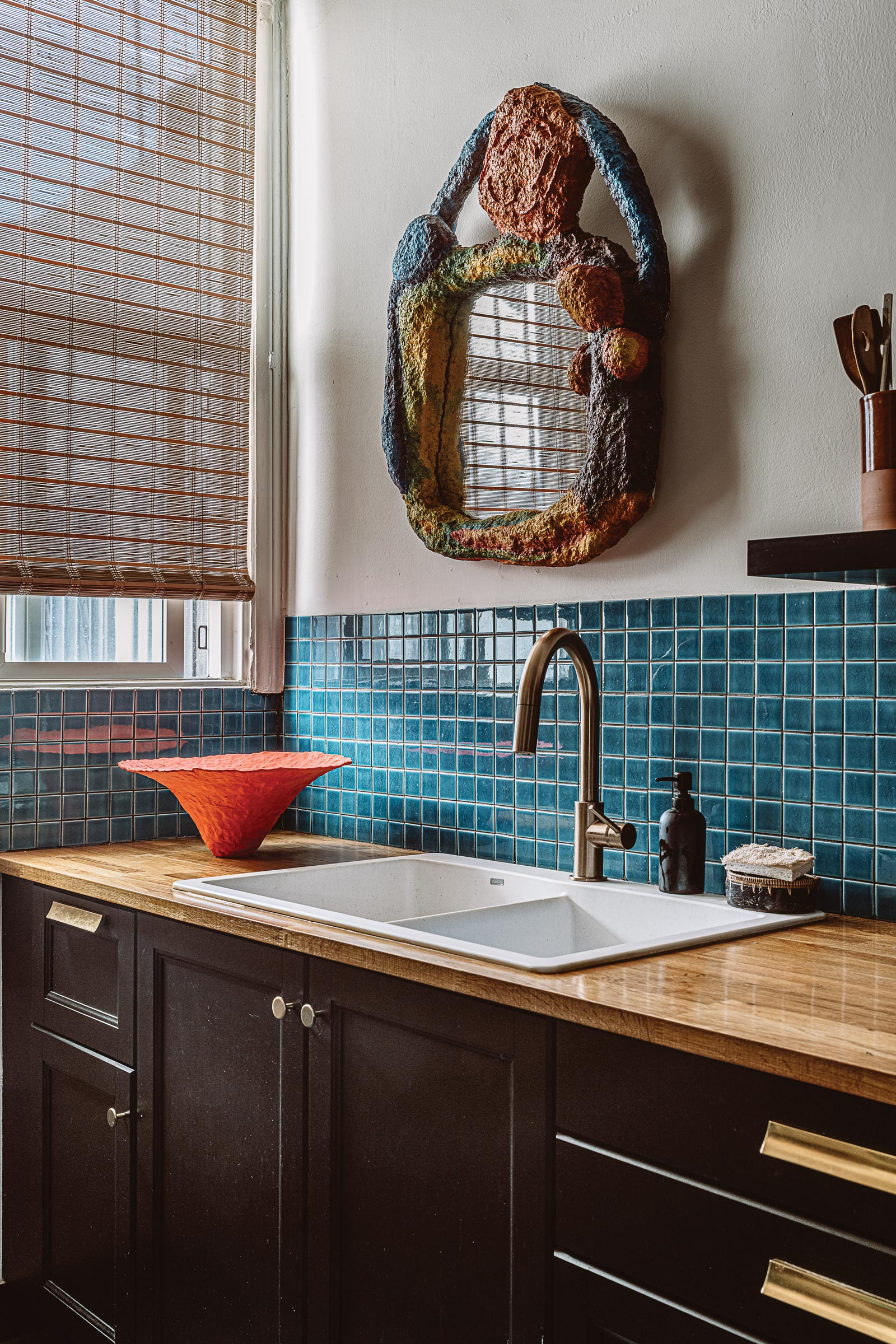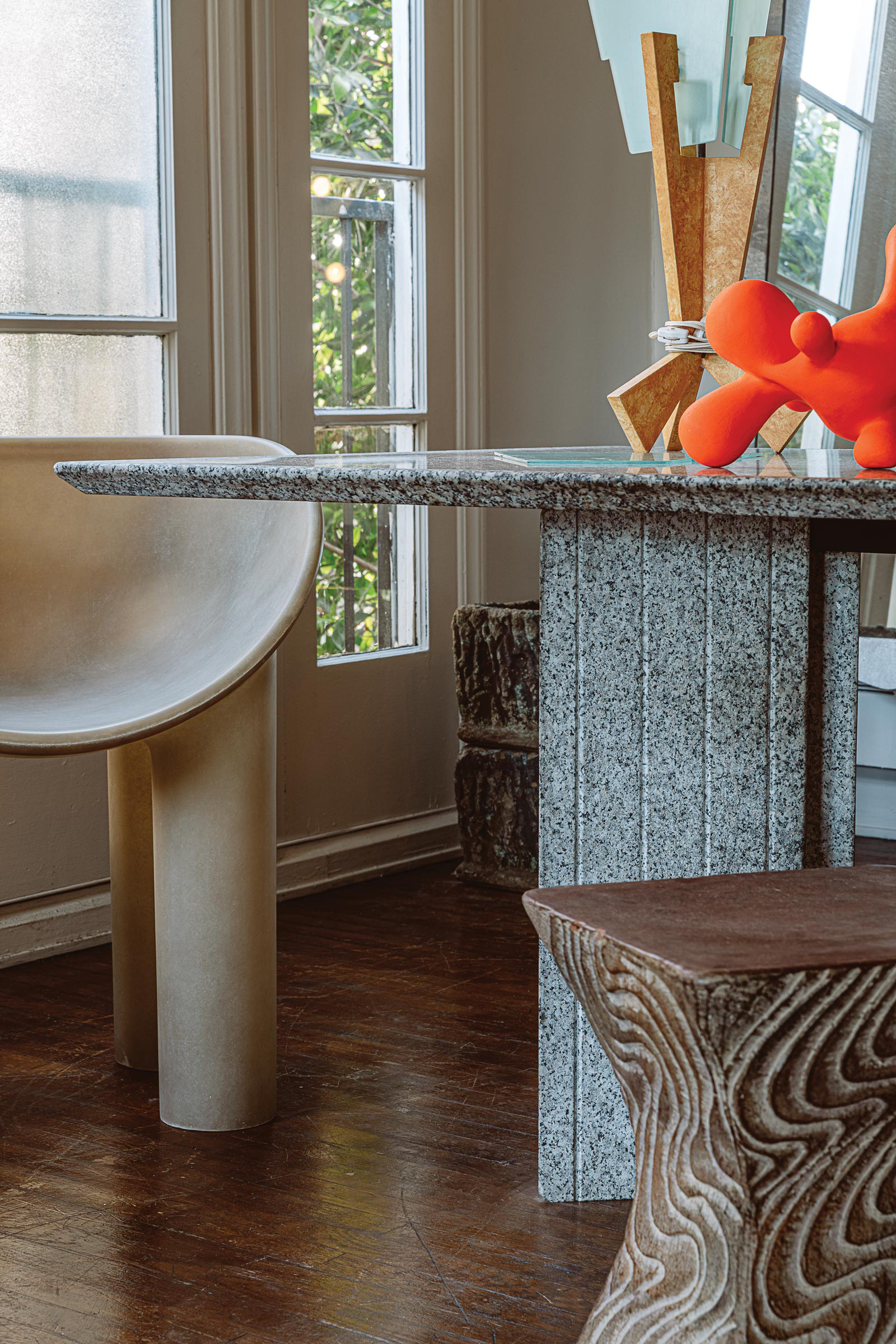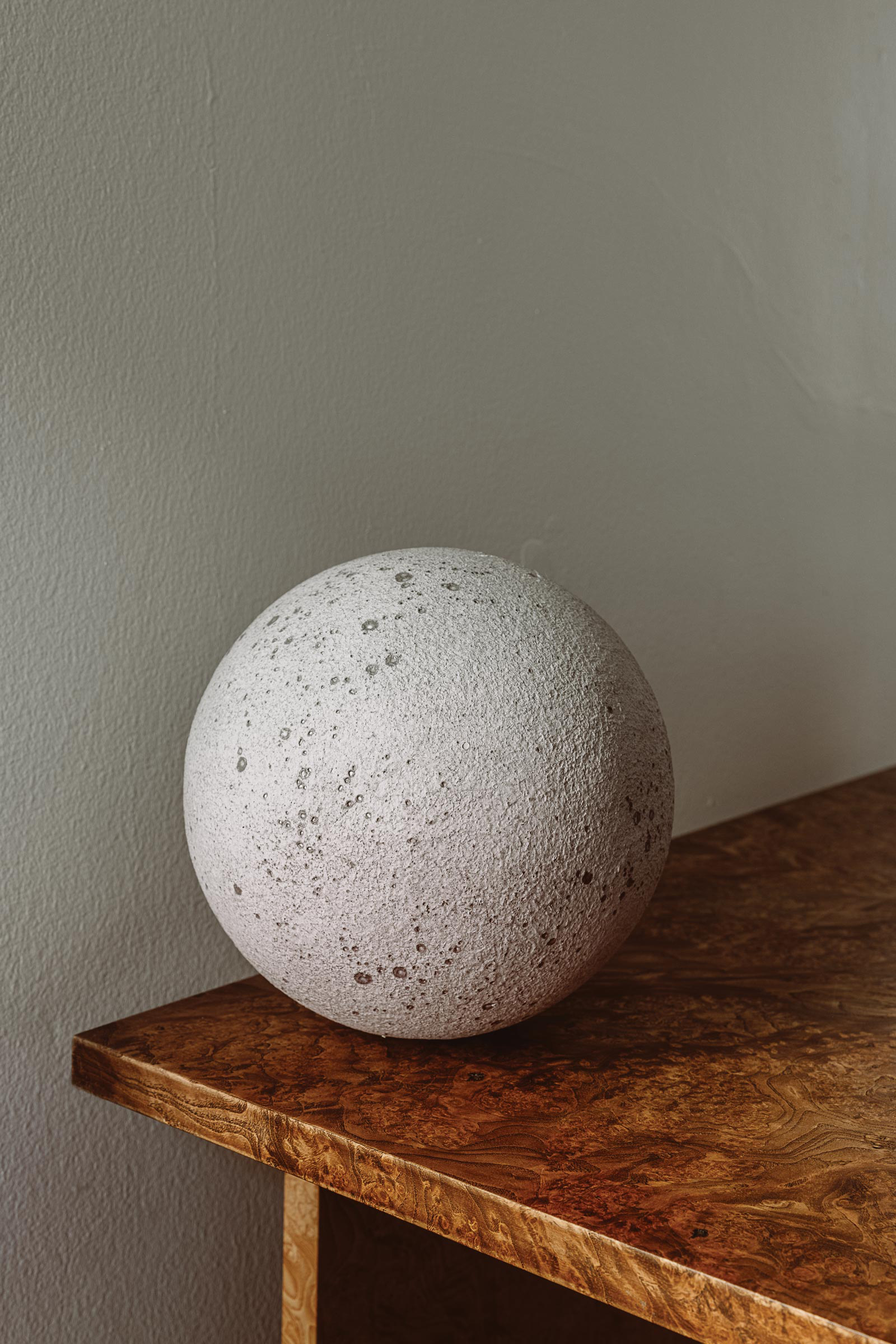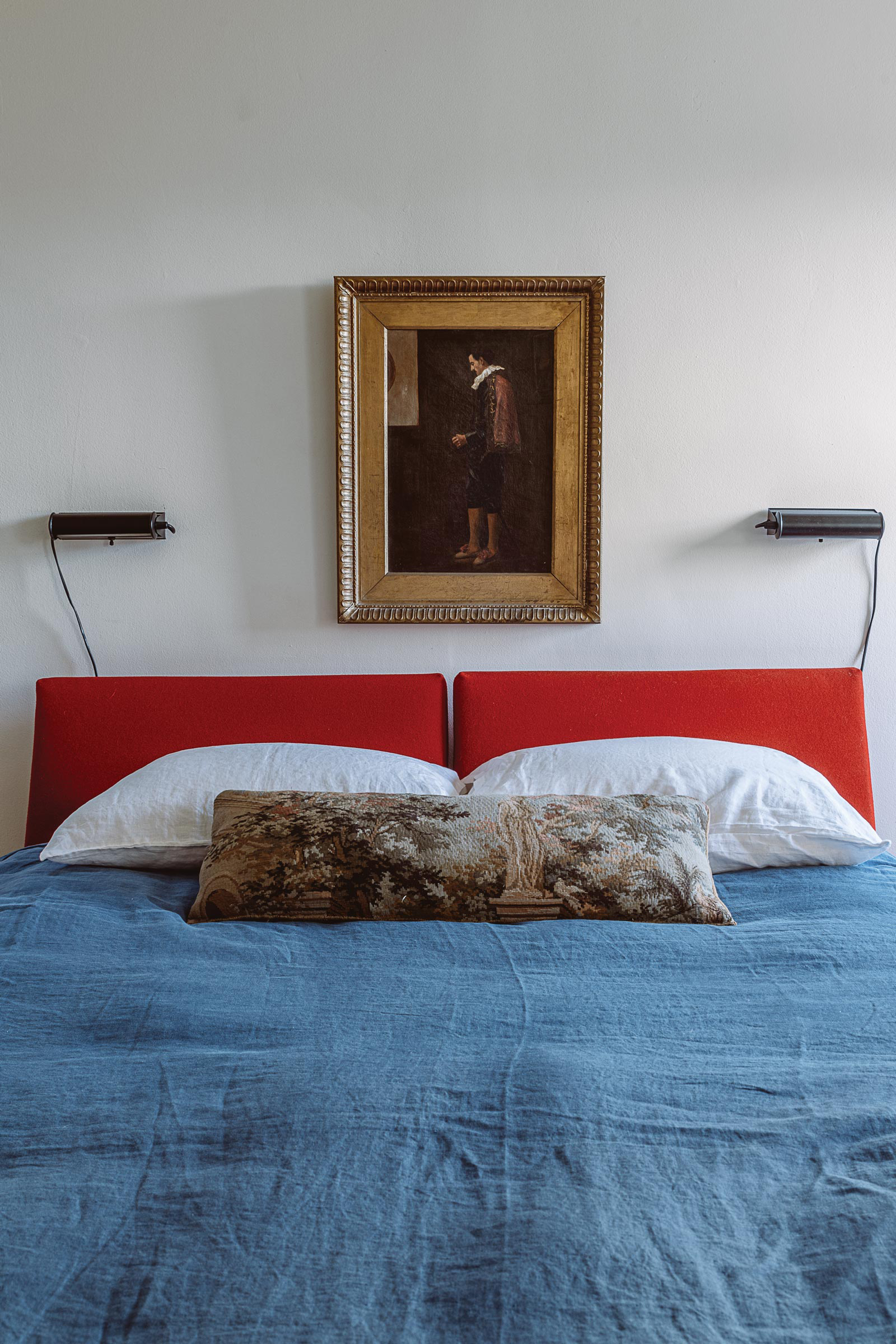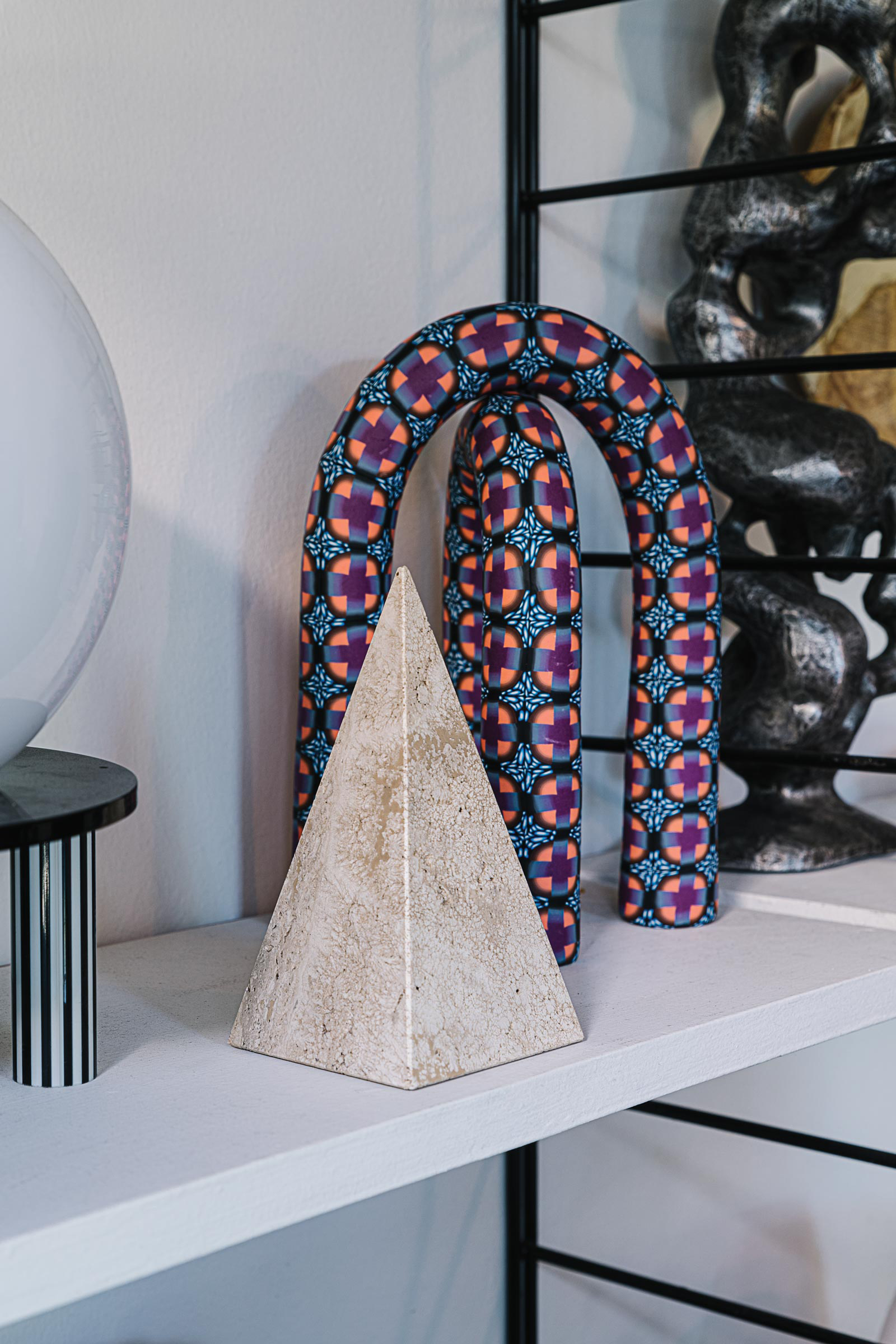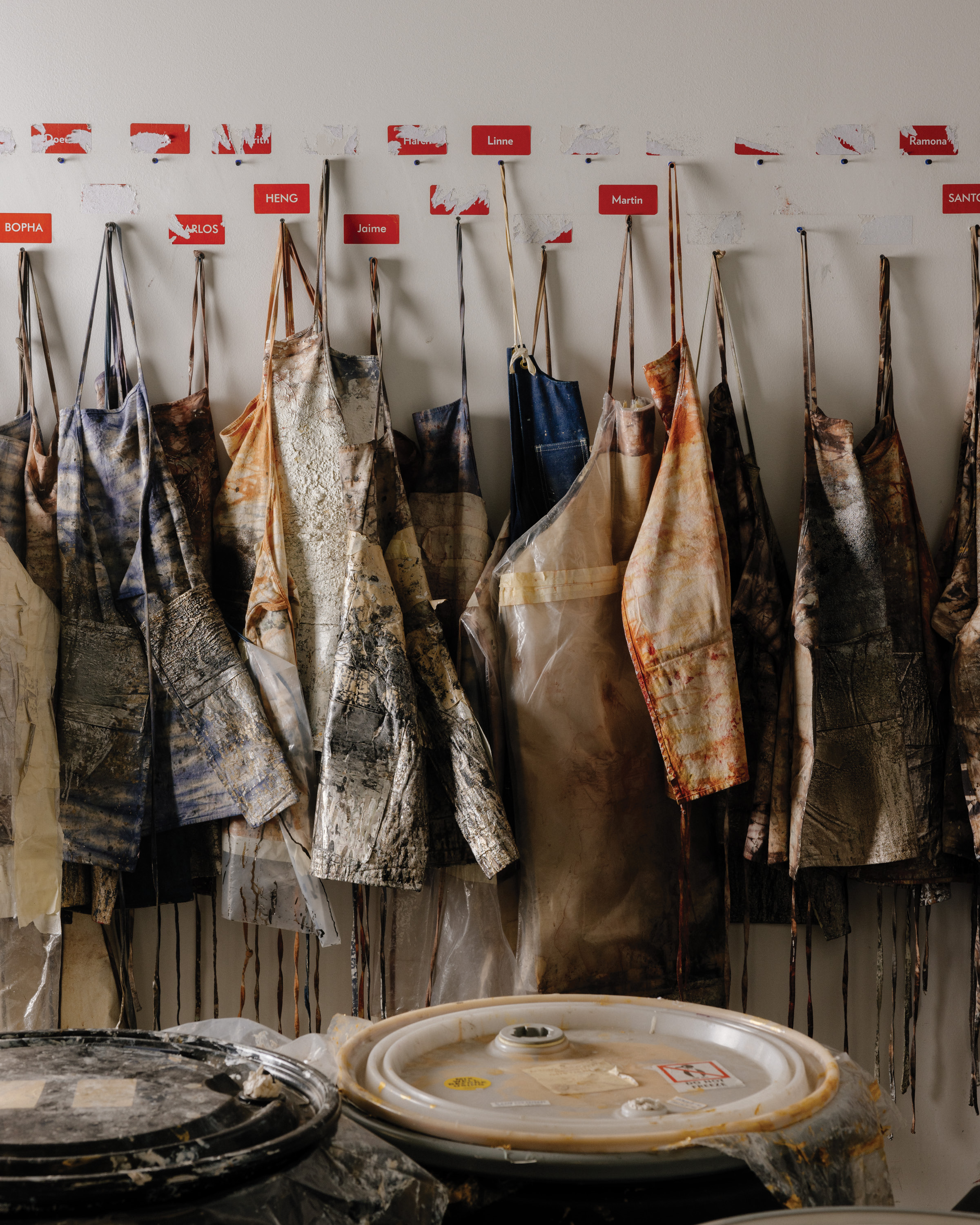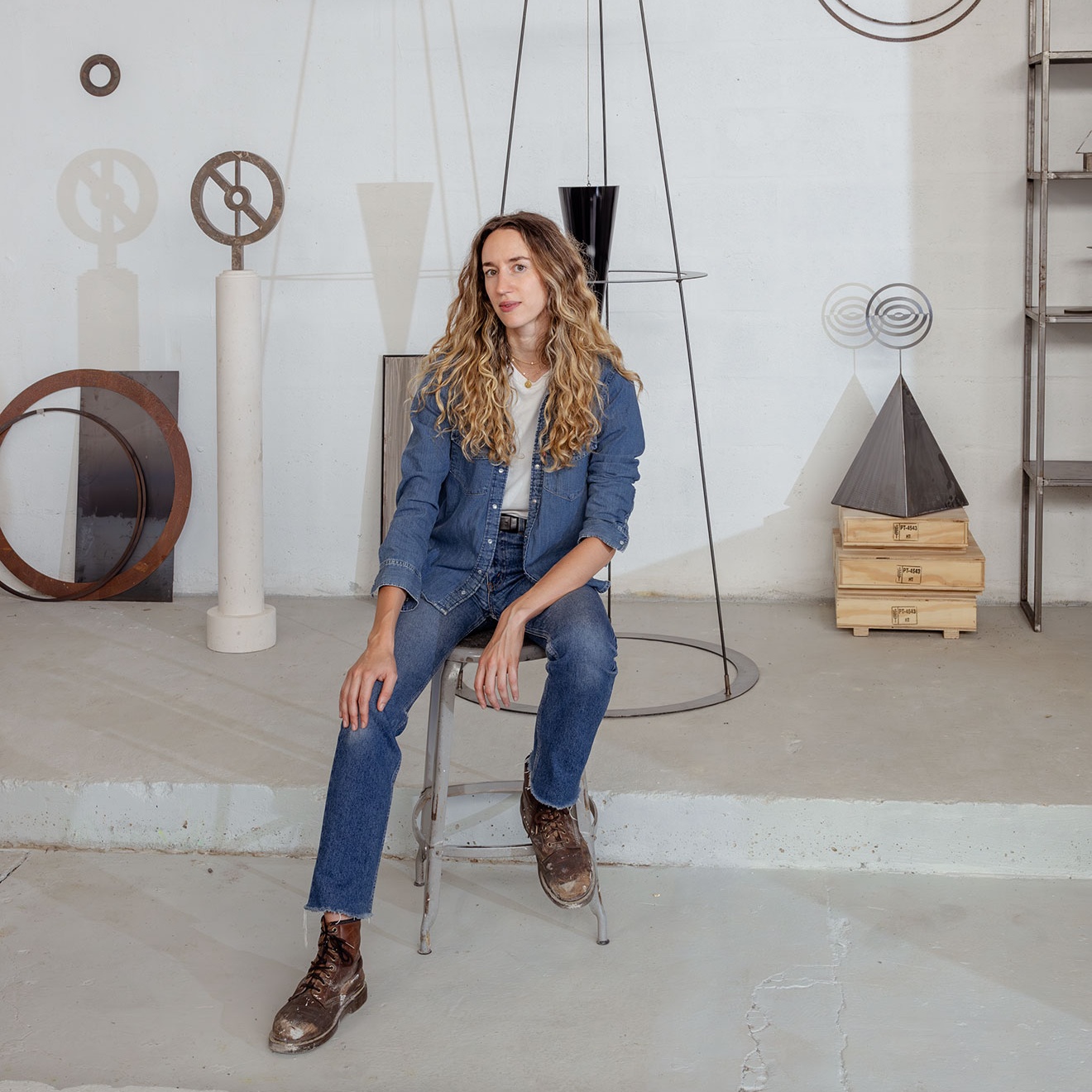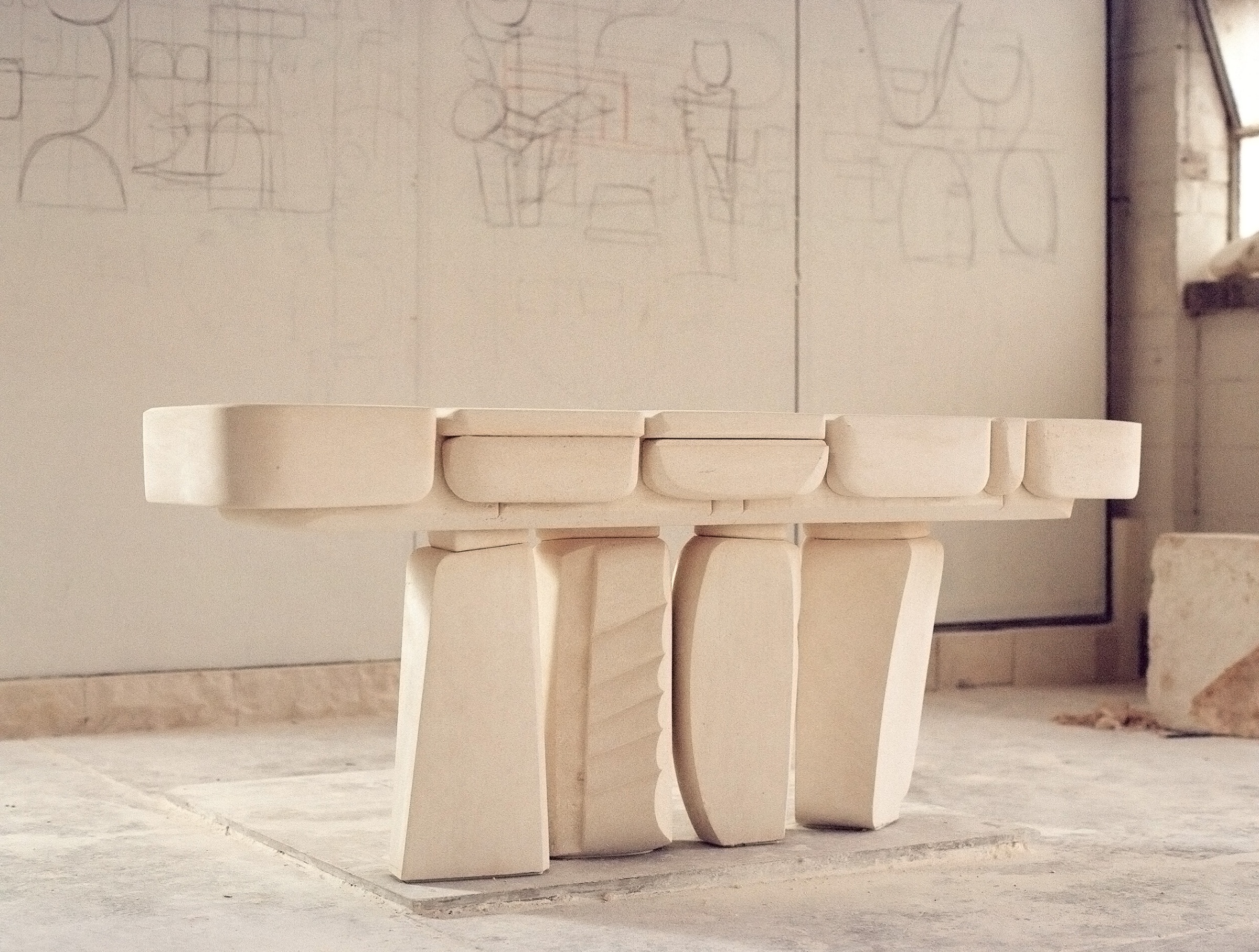“I was influenced somehow or another by doodads,” art dealer Rhett Baruch tells me, utterly sincere. “Doodad,” by definition, means (literally) nothing. It’s a placeholder for words we cannot recall, like a gizmo, a whatsit, something Ariel would collect in The Little Mermaid. But the word “doodad” is perfect to describe so many of the pieces in Rhett’s apartment. I look at the hefty, amoeba-esque, rubber-coated ceramics by contemporary artist Alina Hayes (she calls them her Blooops); an early ’90s mirror that resembles bubbling, rainbow tar; a chandelier by Stefan White, its three green prongs configured like a tangle of vines creeping out from the ceiling. Doodads, all of them. The difference between this space and Ariel’s cavern? Everything in Rhett’s apartment is for sale.
Rhett is an art dealer who peddles wares from his 1920s art deco Koreatown one-bedroom apartment. He shows and sells vintage and contemporary pieces alike—sculpture, couches, paintings, lamps, tables, coat racks, and more. Buyers find him on Instagram and direct message when they want more information about a piece. If they’re local, they arrange a visit to the apartment-showroom, and Rhett might rearrange the apartment to the potential buyer’s tastes. Other collectors arrange to buy over Venmo or Paypal. Rhett didn’t invent this model—he cites New York–based interior designer Michael Bargo, who uses his Brooklyn Heights apartment as a showroom, as an influence. But the casual nature of Rhett’s business is reshaping what comes to mind when we think “art dealer.”
- “I used to kind of prize or hold onto some things,” Rhett Baruch says .“I’m over that now. Everything has a number.” Photo by Chris Force
- Rhett Baruch picked up this 1993 mirror in his kitchen from an auction. It’s a papier-mâché piece called “éclair,” made by an anonymous French artist. Photo by Chris Force
As we talk, Rhett bops around his flat. He can barely sit still. He compulsively tweaks configurations of sculptures and books, he hammers nails into drywall to hang paintings, he assembles an angular lamp by the brand Neophile without reading the instructions. He buzzes nervously and enthusiastically, as if he’s had one espresso shot too many, though I haven’t actually seen him drink any. Rhett, too, is a doodad of man. He tells me he moved from Phoenix to Los Angeles in 2016 with plans to become an interior designer. In retrospect he feels it was an unrealistic goal—he has no formal training in art or design, he doesn’t know how to use design software, and the most recent line on his resume was call center manager. Out of sheer necessity to pay rent, he turned to his strong suit: his taste. Where Rhett lacks a design degree, he has the eye, the scrappiness, and the enterprising spirit to make his showroom stand out. Throughout my visit, I pause and watch Rhett work, amused by his frenetic rearranging. He notices the silence. “C’mon, Grace,” he says. “Hit me with more questions.”
Back in Arizona, Rhett collected vintage and contemporary pieces for fun and amassed quite a collection. “I decided to start making scenes and put them on Instagram,” he recalls. “I had no clue what else to do, so I did it. And I started selling once in a while.” Slowly, Rhett amassed an Instagram following and got the right people interested. Florida vintage collector Gillian Bryce started, as Rhett puts it, throwing him bones. “She’d be like, ‘Hey, get this.’ And I’d say, “It’s weird. I’ll get it.” That started developing my taste toward shape and color.”
- Essentially everything in Rhett Baruch’s LA apartment-showroom is for sale, though these beauties were recently purchased. Photo by Chris Force
- The ceramic spheres like this one were studio made by an unlisted artist, signed and dated 1989. Photo by Chris Force
For Rhett, dealing art is about survival. He started selling acquired pieces on Instagram to make a few bucks after the move to LA. He only started calling himself an art dealer (that is, added “art dealer” to his Instagram bio) in 2019—not because he felt like one, but out of necessity, to make clear that the pieces posted were for sale. He sells out of his apartment to cover overhead costs. His foray into contemporary art began in August 2019, and it, too, was born out of survival: He was broke, sold his Ford Escape (he’d already sold his souped-up Infiniti Q45 with 20-inch rims, a vestige of his car hobbyist days), and began to walk a lot. Those walks around Koreatown opened his mind creatively, and he attributes his courage to ask to show contemporary artists’ work to his walking habit. Since then he’s also cut back on buying personal items—“If I get a nice, new shirt? That could sink me,” he worries—and instead he pours everything into his business.
The showroom-apartment model may have survivalist roots, but it has its practical benefits, too. Buyers get to see how pieces look in a real, lived-in space, not just on a pedestal in an all-white showroom. Plus, they get to meet his wizened dachshund mix, Leon, the perfect Zen complement to Rhett’s restlessness. Rhett often sells to interior designers, some collectors (often first-timers), and other dealers who, in turn, mark the pieces up. “Of course tons of people within art and design live really well. But then there’s a lot of people who actually don’t,” he says, before striding away from me to rearrange his bedroom wall art. He keeps talking, though. I almost lose my breath dogging him back-and-forth down the hallway connecting his bedroom and dining room. “Artists, designers—they rely on people far wealthier than them to make sure they’re paid. They don’t live the lifestyle of their clients.” He’s not selling to galleries and museums; he’s selling to people who love art and sculpture and want it in their homes for a reasonable price. “People really love that I live it.”
- Photo by Chris Force
- Decor in Rhett Baruch’s place is always changing, and he’s now used to moving new pieces in and out. Photo by Chris Force
While Rhett doesn’t have a formal design education, his parents collected antiques. “European, turn-of-the-century stuff, and American Federation,” he says. “It’s not worth anything anymore and isn’t perceived to be cool in any realm.” Their taste might not have rubbed off on Rhett, but he adopted their knack for treasure hunting. And in the 21st century, the internet is the new garage sale. Right now, Rhett has pieces available that he’s found on Craigslist and Reddit, at the Rose Bowl Flea and auction houses, and directly from contemporary artists and dealer colleagues like Gillian. He can’t afford to be picky. “You can’t say ‘No’ as a dealer if it’s there and it’s good,” Rhett says. “Even if you’re packed up to the ceiling, you’re like, ‘It’s a great sculpture. I have to add it to the pile.’”
And Rhett means “pile” quite literally. As we talk, the dealer pulls a primary-colored painting by Italian artist Mary Cinque out of a deep, narrow closet. The storeroom is stocked with art, mostly vintage, as the contemporary pieces tend to stay on display. Living in an active showroom means living in aesthetic fluidity. While he gets to live among beautiful things—a large rose granite table by Italian architect Enrico Baleri centers his dining room—none of them are his, really. That used to bother him. “I used to kind of prize or hold onto some things,” Rhett says. He specifically recalls a California “studio craft” piece—a single piece of wood carved like a totem pole and lacquered black. “I’m over that now. Everything has a number.” Survivalism. On the other hand, when he’s sick of looking at a painting or a sculpture, he can dip into his arsenal of doodads to create a wholly new feel for a room.
Overall things have been moving quickly for Rhett; he’s only been showing contemporary works since last August. In February he premiered a new exhibition in a pop-up space in Los Angeles called “Out Of The Blue.” The show features work from designers and artists whose work I saw at his showroom, too, including ceramics by Taylor Kibby and a resin table by Elyse Graham. What’s next for Rhett isn’t totally clear, not even to him. All he aspires to career-wise, he says, is “people thinking I have a good eye.”
This article originally appeared in the Spring/Summer 2020 issue of Sixtysix with the headline “Rhett Baruch: Art Dealer.” Subscribe today.
